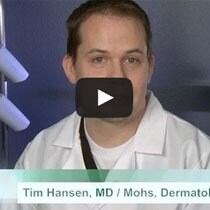Sun Safety Day at the Pool
The 2021 Sun Safety Day was held at the Furman Aquatic Center on Friday, August 13. We had a great turnout and provided sun safety information to nearly 200 people!
Attendees who visited our Sun Safety booth were given free sunscreen courtesy of the Iowa Cancer Consortium, lip balm with SPF and children could grab a pair of sunglasses with UV protection. We were able to test people's sunglasses, thanks to McFarland Eye Clinic, to ensure they had the proper UV protection.
If you missed this year's Sun Safety Day - don't worry! We hold this event every year, so watch next summer for details on date and time.
In the meantime, use the information below to help protect yourself from the sun's rays.
Soak up this expert advice before you soak up the rays
Summer should be as carefree and pain-free as possible. One way to ensure that it will be is by protecting your skin from potential sun damage. To get ready for the bright days ahead, we’ve tapped into the expertise of dermatologists, pediatricians and national organizations to provide a handy and engaging collection of tips and facts about summer skin protection.

Q: How should I apply sunscreen to my kids?
Dr. Leslie Christenson, a McFarland Clinic dermatologist and Mohs Surgeon, walks through a few easy steps to make sure your youngster is protected before they have fun in the sun.
Q: What’s the difference between SPF 40 and SPF 100?
A: The SPF (sun protection factor) is a multiplier and is based on lab studies rather than actual, real-world conditions, says Dr. Stuart Kolner, a dermatologist with McFarland Clinic. The idea is if it takes you 30 minutes to get pink at noon on a summer day, an SPF 30 sunscreen would supposedly allow you to go 30 x 30 minutes (or 15 hours) before getting pink. However, many variables affect how much damage the sun can do to your skin, including your skin type, the time of day and the latitude (which determines the angle of the sun’s rays and, therefore, their intensity). So it is best to think of SPF as a rough estimate of the amount of protection you’ll get from a sunscreen compared to sunscreens of other SPFs.
And don’t rely on the sunscreen alone—make it part of a sun-protection routine that includes seeking shade, avoiding the peak sun hours of 10 a.m. through 3 p.m. and wearing sun-protective clothing.
Sunscreens need to be reapplied every hour or two to maintain their SPF effectiveness (and even more frequently if swimming or sweating). Also, look for a broad spectrum sunscreen (which blocks UVA and UVB rays). And use plenty—it is estimated that you’ll need a shot glass full of sunscreen to cover the exposed parts of the body with each application.
Q: I’m dark-skinned, so I’m less susceptible to sun damage, right?
A: People with dark skin who tan easily and burn rarely are at lower risk for skin cancers caused by sun, says Kolner. However, that extra protection can easily be overwhelmed by spending excessive amounts of time in the sun, especially in the middle of the day or in areas nearer to the equator. Dark-skinned people do get skin cancers and can also suffer from premature aging of the skin due to sun damage. So they should follow the same general guidelines as lighter-skinned people.
Q: Should bald people spend the entire summer indoors?
A: Hair can provide a surprising amount of sun protection, and many balding men become aware of this with their first-ever scalp sunburn, says Kolner. You don’t have to be bald to get scalp damage from the sun. Many people with thinning hair (including women) experience sun damage and sunburns of the scalp. While sunscreens can help reduce this risk, they aren’t easy to use in hair-bearing areas. The best approach is to wear a broad-brimmed, opaque hat on all sunny days. Indiana Jones and cowboys have the right idea!
Q: What exactly is melanoma?
A: Melanoma makes up less than five percent of skin cancer cases, yet it is the most dangerous type of skin cancer and is the cause of most skin cancer deaths. When melanoma is identified in its early stages, the disease is almost always curable.
Melanoma starts in skin cells called melanocytes, which make the brown skin pigment known as melanin. Melanin provides protection for the deeper layers of the skin from the harmful effects of the sun.
Q: Why does sunburned skin sometimes blister or peel?
A: Blistering is a sign of significant damage, just like the blistering that follows a second degree thermal burn, says Kolner. Peeling follows inflammation during its healing stage. It is important to know that although the blistering, redness, pain and peeling from a sunburn eventually go away, the cellular damage and predisposition to skin cancer that the burn causes never go away. One blistering sunburn raises your risk of skin cancer, including potentially deadly melanoma.
Q: True or false: Self-tanner protects the skin.
A: False, says the
American Cancer Society. Self-tanners offer little protection from the damaging effects of UV radiation. Check the product label to see if the self-tanner provides any protection against the sun. Products with sunscreen would be effective for just a couple hours. In most cases, the safest bet is to keep using sunscreen and wearing protective clothing when heading outdoors.
Q: True or false: Tanning beds prepare your skin for summer sun exposure.
A: Also false, says the American Cancer Society. Getting a “base tan” in a tanning bed offers scarce protection against sunburn. A base tan could up your chances of getting burned because you may decide to be outdoors longer without adequate sun protection. Also, research shows that indoor tanning increases a person’s melanoma risk by 75 percent.

Q: How can I avoid getting a sunburn?
Sunscreen isn't the only way to protect your skin this summer. McFarland Clinic Dermatologist and Mohs Surgeon Dr. Timothy Hansen explains other measures you should take to protect your skin.
Q: True or false: A tan protects you from the sun.
A: Once again, false. A tan develops only after there has been damage to the DNA in the skin cells, says Dr. Leslie Christenson, a McFarland Clinic dermatologist. Therefore, a tan is a good sign of sun damage, not sun protection.
Q: Is tanned skin more attractive?
A: Recent surveys by the American Dermatology Clinic indicate a lot of us think a tan makes people more attractive. But, says Kolner, there is nothing inherently healthy about tanned skin; in fact, it is a sign of radiation damage (in this case, solar radiation). This “bronze is beautiful” attitude is a recent cultural phenomenon, says Kolner. In the past, light skin (often enhanced by the application of powder and other makeup) was felt to be the most beautiful, possibly because it implied the wealth of the leisure class who didn’t have to work outside all day to make a living. One hundred years ago, American southern ladies carried parasols (the name literally means “against the sun”) to keep their skin as light as possible because light skin was felt to be the most beautiful and genteel. Renaissance paintings featured alabaster skin in images of ideal beauty.
Q: Are older people less likely to get sun damage?
A: No, says Leslie. They are just as likely to get sun damage and less likely to repair the damage the sun does to the DNA in the skin cells.
Q: What are basal and squamous cells?
A: Basal and squamous cells are found at the base of the outer layer of the skin. Each year, more than two million cases of basal and squamous cell skin cancer are identified in the United States, according to the American Cancer Society. These types of skin cancer are classified as non-melanomas. Most of them develop on areas of the body exposed to the sun, including the face, ear, neck, lips and the backs of the hands. Basal and squamous cell skin cancer can be fast or slow growing but rarely spread to other parts of the body. When found and treated early, basal or squamous cell cancers are highly curable.
Q: What should I look for when buying long-sleeve swim shirts for kids?
A: Christenson recommends shirts that have ultraviolet protection factor (UPF) 50 or higher.
Q: Does being in the water protect you from the sun’s rays?
A: No. Water reflects the sun, so your face can get a bit more sun intensity while swimming.
Q: Do clouds or a nice, cool breeze cut down on harmful rays?
A: Don’t be fooled, warns the American Academy of Dermatology. Harmful UV rays can still penetrate your skin even when the sky is overcast. Up to 80 percent of the sun’s UV rays can pass through clouds on a cloudy day.

Q: When should I go to the doctor for a sunburn?
A sunburn can make you feel miserable, but when is it bad enough to go to the doctor? McFarland Clinic Dermatologist and Mohs Surgeon Dr. Timothy Hansen explains the symptoms to watch out for with a severe sunburn.
Q: What if I’m allergic to sunscreen?
A: Few are truly allergic to sunscreen, says Christenson. But for those who are, or those irritated by it, look for sunscreens with physical blockers for active ingredients such as titanium dioxide or micronized zinc oxide. These are better for sensitive skin.
Q: Do I have to wear sunscreen any time I’m out in the sun, like when I’m at a ballgame, golfing or driving with the windows down?
Q: What is “Slip! Slop! Slap! Wrap”?
A: It’s an easy-to-remember phrase promoted by the American Cancer Society to remind people to follow these four key ways to protect themselves from UV radiation:
- Slip on a shirt,
- Slop on sunscreen,
- Slap on a hat, and
- Wrap on sunglasses to protect your eyes and the sensitive skin around them from ultraviolet light.
Q: What is Mohs surgery?
A: It is special surgery for the treatment of some skin cancers that allows the least amount of healthy skin to be removed and still gives the highest cure rate.
Learn more about
Mohs Surgery.
Q: Should I use sunscreen on my baby?
A: Most pediatricians do not recommend sunscreen before six months of age, says McFarland Clinic pediatrician John Paschen, MD. Babies have more skin surface per pound of body weight, which means chemical absorption is multiplied in their little bodies. Furthermore, the use of sunscreen on infants tends to give parents a false sense of security, which can be a problem since babies can easily get a bad burn, says Paschen. Once sunscreen is used, pediatricians recommend SPF 30. Even if it is waterproof, it should still be reapplied after the child has been in the water. Remember, Paschen adds, the temperature outside has no bearing on the sun intensity. In Iowa the sun can be intense enough after mid-April to cause a burn. Some of the worst burns Paschen sees are after a sunny weekend when Iowa State University’s annual VEISHEA parade is held. Another piece of advice for parents: If you seek shade for your child, it needs to be dense, cool shade to be protective. Filtered shade (oak trees in spring, for example) can still cause a burn
Q: What are the warning signs of skin cancer?
A: Non-melanoma skin cancer consisting of Basal cell carcinoma and Squamous cell carcinoma can present itself in many ways, says Christenson. Any sore that just won’t heal, or bleeds with minimal trauma (such as toweling dry after a shower), need to be examined by a physician. Sometimes just a persistent red bump that might appear like a pimple can be a skin cancer, so new red sores that don’t resolve need to be examined.
Melanoma has a different set of signs to look for:
A: Asymmetry of the lesion, one half not being the same as the other.
B: Border irregularity.
C: Color variation, or more than one color within the same lesion.
D: Diameter greater than six millimeters, which is about the size of a pencil eraser.
E: Evolution or change over time.
Q: I don’t like putting sunscreen near my eyes. Are there any other options?
A: Yes—wear sunglasses, says Dr. Daniel Koenig, McFarland Eye Center optometrist. Wear wraparound sunglasses that block UV rays. This doesn’t only protect your eyes, but also the skin around them. Many people avoid putting sunscreen around the eyes because of irritation concerns. Cost, color and style of the sunglasses don’t matter as much as the ability to block 100 percent of UV rays. The sun’s ultraviolet (UV) rays are strongest between 10 a.m. and 2 p.m., but you really want to protect your eyes whenever you’re outdoors. Wearing sunglasses and a hat will provide the best protection for your eyes. Also, you should never look directly at the sun. Solar radiation can damage your eye’s retina.